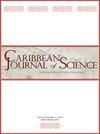格林纳达远洋延绳渔业圆钩和J钩性能的比较
IF 0.5
4区 生物学
Q4 BIODIVERSITY CONSERVATION
引用次数: 2
摘要
摘要在远洋延绳钓渔业中使用圆钩通常被认为是一种破坏性最小的方法,可以最大限度地减少副渔获物的死亡率。然而,大多数研究都是针对大规模渔业,而不是许多加勒比国家的小型船队。尺寸为16/0的圆钩和9/0 J的钩在26组中交替使用,以评估圆钩在格林纳达远洋延绳钓渔业中的性能。比较不同鱼钩类型的鱼的捕获量、死亡率、鱼钩位置、长度和等级。鱼钩类型之间在船上死亡率或黄鳍金枪鱼等级方面没有发现物种特异性差异。然而,用圆钩捕获的整体billfish(t=2.36,p=0.028)和旗鱼(t=3.04,p=0.005)明显减少。此外,与J钩相比,用圆形钩捕获的金枪鱼有69%的机会被外部钩住(χ2=4.38,p=0.036)。所有其他被分析的物种,无论钩型如何,都有相似的捕获率(p<0.05),包括黄鳍金枪鱼。这项研究的结果表明,格林纳达中上层延绳钓渔业——以及其他加勒比船队——可以通过使用16/0圆钩来减少对billfish种群的影响,而不会对黄鳍金枪鱼的捕捞率或等级产生负面影响。由于许多副渔获物物种的数量处于低迷水平,这些结果还提供了进一步的证据,表明在使用副渔获品缓解方法管理中上层延绳钓渔业时,应将圆钩作为推荐的终端渔具类型,同时保持当地和出口市场的目标渔获量。本文章由计算机程序翻译,如有差异,请以英文原文为准。
A Comparison of Circle and J Hook Performance Within the Grenadian Pelagic Longline Fishery
Abstract The use of circle hooks in pelagic longline fisheries has often been proposed as a minimally disruptive means to minimize bycatch mortality. However, most studies have been in large scale fisheries, not the small-vessel fleets seen in many Caribbean countries. Size 16/0 circle hooks and 9/0 J hooks were alternated over 26 sets to assess the performance of circle hooks in the Grenadian pelagic longline fishery. Catch, mortality, hook location, length, and grade of fish were compared between hook types. No species-specific differences in at-vessel mortality rate or yellowfin tuna grade were found between hook types. However, significantly fewer billfish collectively (t = 2.36, p = 0.028), and sailfish specifically (t = 3.04, p = 0.005), were caught on circle hooks. Additionally, tunas caught with circle hooks had a 69% greater chance of external hooking compared to J hooks (χ2 = 4.38, p = 0.036). All other species analyzed had similar catch rates regardless of hook type (p < 0.05), including yellowfin tuna. The results of this study suggest that the Grenadian pelagic longline fishery – and other Caribbean fleets, by extension – could reduce impacts on billfish stocks by using 16/0 circle hooks without incurring negative effects on yellowfin tuna catch rate or grade. With many bycatch species populations at depressed levels, these results also provide further evidence that circle hooks should be the recommended terminal gear type when using a bycatch mitigation approach to manage pelagic longline fisheries while maintaining target catches for local and export markets.
求助全文
通过发布文献求助,成功后即可免费获取论文全文。
去求助
来源期刊

Caribbean Journal of Science
综合性期刊-生物多样性保护
CiteScore
1.00
自引率
25.00%
发文量
21
审稿时长
>12 weeks
期刊介绍:
The Caribbean Journal of Science publishes articles, research notes, and book reviews pertinent to natural science of the Caribbean region. The emphasis is on botany, zoology, ecology, conservation biology and management, geology, archaeology, and paleontology. The mission as a nonprofit scholarly journal is to publish quality, peer-reviewed papers and to make them widely available.
 求助内容:
求助内容: 应助结果提醒方式:
应助结果提醒方式:


